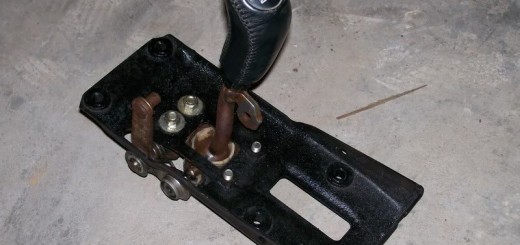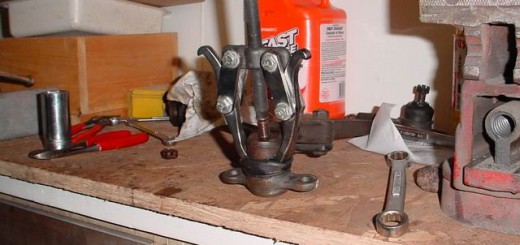Here are some notes pertaining to adjusting the valve clearance on a 1991 Toyota MR2 Turbo.
Start off by removing the basics – the strut tower brace, and air tubes leading to the throttle body. Remove the throttle body pipe and bracket. Loosen the 4 bolts holding the throttle body to the intake, remove the air hose at the base, cold start injector connector, and throttle position sensor connector. There is no need to remove the coolant lines leading to the throttle body. The body can be moved aside after the EGR valve is disconnected. Remove the spark plug wires, and PCV rubber hose going back to the intake pipe before the turbo inlet.

I found it necessary to just move the BOV pipe (ie the pipe from the high pressure side of the turbo to the intercooler inlet) out of the way.

The valve cover can now be removed using a Phillips screwdriver.

Next up is to measure the valve clearance. First the crankshaft must be positioned correctly. I found it easiest to remove the passenger side rear tire, and one of the undercovers to get to the crankshaft bolt (19mm). To see the timing mark, the passenger side engine cover (up top) has to be removed as well. Then the crankshaft is turned clockwise until the timing mark on the crankshaft pulley lines up with the 0 degree mark. The valve lifters on the #1 cylinder should be loose – and they should be tight on the #4 cylinder. If they are not, just run the crankshaft around 360 degrees. At this point the #1 and #2 intake valve clearance can be measured, and the #1 and #3 exhaust valve clearance can be measured. I used a standard feeler gauge and recorded the value of the feeler that would fit and the next higher thickness value that would not fit. Here are my notes:
Intake spec is between .15 and .25mm.
#1 both between .178mm and .203mm.
#2 left between .203mm and .228mm – right between .178mm and .203mm
#3 both between .203mm and .229mm
#4 left between .178mm and .203mm – right between .152mm and .178mm
Exhaust spec is between .20mm and .30mm.
#1 left between .254mm and .279mm – right between .305mm and .330mm
#2 both between .279mm and .305mm – left is slightly tighter.
#3 both between .279mm and .305mm
#4 both between .229mm and .279mm – right is slightly tighter.
Amazingly after 127,000 miles none of the intake valve clearances were out of spec in the slightest! In this case, I decided to change out the #1, #2, and #3 exhaust valve shims.
The shims can be removed without using Toyota’s SST (special service tool). I used an Allen wrench and a screwdriver. It is a good idea to put tape around the screwdriver tip so as to avoid scratches. The Allen wrench can be used to push the valve down – then the screw driver is placed between the camshaft and the lip on the bucket to keep the valve spring compressed. The shim can then be removed using a magnet finger and where necessary pushing it a little with another smaller screwdriver.

Once the shims are removed, it is a good idea to label them (ie Exhaust #1, left side). A caliper can then be used to measure the thickness of the removed shim.

Once the thickness of the removed shim, and the valve clearance with the old shim in place is determined, a value can be calculated for the new replacement shim that will put the clearance back into Toyota’s specification.
For the intake, the formula is N = T + (A – 0.20mm)
For the exhaust, the formula is N = T + (A – 0.25mm)
N = new shim thickness (mm)
T = old shim thickness (mm)
A = measured valve clearance (mm) with the old shim in place.
For this I took the average of the value that would fit and the value that would not fit. For example, if I measured with the feeler gauge that .279mm would fit, but .305mm would not, I would average those values to come up with 0.292mm for the ‘A’ value in the equation. For reference here are the measured used shim thickness that I found for the #1, #2, and #3 exhaust valve shims.
Exhaust #1 – Left 2.794mm Right – 2.794mm
Exhaust #2 – Left 2.8956mm Right – 2.8702mm
Exhaust #3 – Left 2.8194mm Right – 2.8194mm
The calculation for the new exhaust #1 left shim would be:
2.794mm + (0.2665mm – 0.25mm) = 2.8105mm.
Toyota supplies shims from 2.00mm to 3.30mm in increments of .05mm. So here we have a choice of 2.80mm or 2.85mm. I choose 2.80mm.
The calculation for the new exhaust #1 right shim would be:
2.794mm + (0.3175mm – 0.25mm) = 2.8615mm.
Here I choose to use the 2.85mm replacement shim.
I choose to purchase a new valve cover gasket along with the new shims from Toyota.

The new shims can then be put in. Again, using the Allen wrench and a screwdriver to hold the bucket down, the new shims can be put in.

Once the new shims are in place, the valve clearance should be re-checked. In my case, one of the shims was too tight and another was too loose, but by using some of the old shims, I was able to get them very close to 0.25mm. The valve cover can then be installed – use some silicon sealant to seal around the camshafts and distributor (6 places in all).


The throttle body, spark plug wires, EGR valve, and various piping etc. can now be re-installed.
This documentation in no way replaces the Toyota MR2 Repair Manuals. The purpose of this content is only to provide supplementary information to fellow MR2 enthusiasts. Midship Runabout and its contributing authors will not be held responsible for any injury or damages that may occur as the result of practicing any of the methods or procedures described within this website. Article and photo submissions are property of the contributing author.


